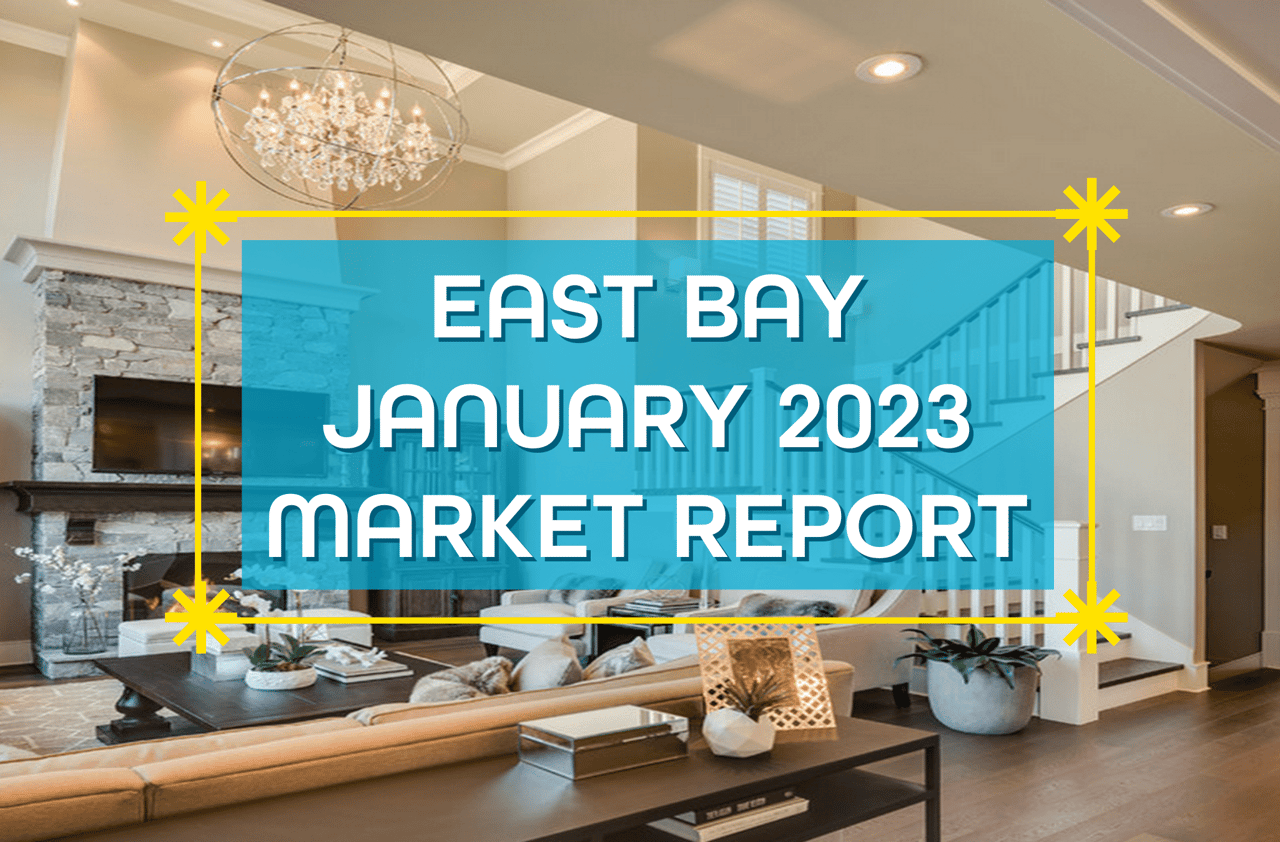East Bay January 2023 Market Report
Market Update

Market Update

Note: You can find the charts & graphs for the Big Story at the end of the following section.
What happened yesterday has more bearing on today than what happened five years ago, so we’re shortening our lookback window to better understand what’s to come. This isn’t to say we can’t use history or that it should be dismissed entirely; rather, the pandemic set in motion a series of events that led to a different housing market, a different overall economy, and a different world when compared to pre-pandemic times. So, as many do in the new year, we reflect on the last year and envision what’s to come.
The economic factors are mixed, suggesting that the market is balancing out. Demand had nowhere to go but down after the rise in interest rates and the buying frenzy between 2020 and 2021. (The average homeowner stays in their home for about eight years.) The supply of homes is still about 20% below pre-pandemic levels, so the drop in demand brought the market closer to balance. In 2023, we expect a return to seasonal trends — price and inventory growth in the first half of the year and contraction in the back half — but at relatively lower levels, meaning fewer new listings and fewer sales overall.
The U.S. housing market has certainly shifted throughout the year, and we must recognize the current conditions homebuyers and sellers face. Of course, different regions vary from the broad national trends, so we’ve included a Local Lowdown below to provide you with in-depth coverage of your area. As always, we will continue to monitor the housing and economic markets to best guide you in buying or selling your home.
Note: You can find the charts/graphs for the Local Lowdown at the end of this section.
As we mentioned in the Big Story, the market has cooled for both buyers and sellers, largely because of higher interest rates. As we enter the new year, the market feels familiar — but from the era before 2020. Demand in the East Bay is evergreen, so we aren’t worried about matching buyers and sellers. That said, sellers likely won’t be getting multiple offers the second the home hits the market again anytime soon. To make a long story short, there is definitely less stress on the buying side of the market. Prices will most likely increase in 2023, but at a more modest rate of around 5-6%, which makes for a much healthier market than the volatile price movements that occurred over the past three years. Single-family home prices contracted in the second half of 2022, landing near 2020 prices in Alameda and Contra Costa, while condo prices have maintained some of their price gains. When we look back further to Q4 2019, single-family home prices have increased 27% in Alameda and Contra Costa, and condo prices have risen 10% in Alameda and 17% in Contra Costa. Without any signs of interest rates dropping, we’re entering a stage of slower, longer-term growth.
When we look at single-family home inventory levels for 2021 and 2022 side by side, the stark difference is immediately apparent. The 2021 market was defined by extremely high demand given the number of new listings, which kept inventory low throughout the year. In 2022, however, demand softened and the new listings far outpaced sales, allowing much-needed inventory to grow at a higher rate than the year before. In the second half of the year, fewer homes came to market and rising mortgage rates dropped demand, but supply fell faster, although inventory at the end of 2022 was higher than the all-time low in December 2021. The condo market had a simpler story in that there were fewer new listings without a proportional decline in sales, so inventory remained low, even reaching an all-time low in December 2022. This year, we expect the housing market to look a lot more like 2022 than 2021.
Months of Supply Inventory (MSI) quantifies the supply/demand relationship by measuring how many months it would take for all current homes listed on the market to sell at the current rate of sales. The long-term average MSI is around three months in California, which indicates a balanced market. An MSI lower than three indicates that there are more buyers than sellers on the market (meaning it’s a sellers’ market), while a higher MSI indicates there are more sellers than buyers (meaning it’s a buyers’ market). MSI has trended higher since spring 2022 but leveled out near two months of supply before reversing, indicating the East Bay is still in a sellers’ market. Despite the changing economic environment, we are comfortable saying that the market will still favor sellers for at least the first quarter of 2023.
Stay up to date on the latest real estate trends.

Real Estate

Real Estate

Real Estate

Real Estate

Real Estate

Real Estate

Tips For Your Home

Tips For Your Home

Real Estate
You’ve got questions and we can’t wait to answer them.